Richard Serra, whose monumental steel sculptures transformed public and private spaces, dies at 85
Richard Serra, who was part of the pioneering corps of artists who made the former manufacturing buildings of Tribeca their studios and their homes, and whose monumental steel sculpture transformed public spaces downtown and across the globe, died on Tuesday in Orient on the North Fork. He was 85, and had decamped to his home out east during the pandemic.
The Times has a wonderful obituary, tracing his Tribeca roots to 1966, when he and his first wife returned from a stint in Europe. He moved in the mid-70s to a floor of 173-175 Duane, and eventually amassed the entire building. (It was also home to the artist Elizabeth Murray.) In 1981, he married Clara Weyergraf, who survives him.
Serra started out working in lead in the early ’70s, but eventually Corten steel became his stock in trade — both for his museum and gallery works and public installations. And here again he made an impact on the neighborhood: first with two installations supported by the Public Art Fund and not long after with a controversial piece sited for Foley Square.
T.W.U., a vertical sculpture consisting of three plates, each 12 feet by 36 feet and weighing 72 tons, was installed at what is now Finn Square, at West Broadway and Franklin, on April 24, 1980, and stood there until July 30, 1981. The work is now permanently installed in Hamburg, Germany. Also installed that same day in 1980 was St. John’s Rotary Arc, one of Serra’s earliest curved sculptures. It consisted of 12-by-40-foot steel plates that formed a 200-foot arc installed on the rotary of the Holland Tunnel and stood in place until 1987. The piece, sponsored by Leo Castelli, weighed 110 tons and required five flatbed trucks to transport it to New York City.
In 1981, a second site-specific curved sculpture titled Tilted Arc was installed on the Lafayette side of 26 Federal Plaza, just west of Foley Square, commissioned by the federal General Services Administration’s Art-in-Architecture Program. That piece spanned 120 feet and stood 12 feet high, arcing and leaning slightly as it curved across the plaza. The piece, which was chosen through a rigorous selection process, was met with resistance by workers in the building and an eight-year campaign to remove it ensued. After it was dismantled on March 15, 1989, Serra sued the federal government, claiming that the removal of “Tilted Arc” constituted a violation of his First Amendment right to free speech and Fifth Amendment right to due process. The federal district court rejected all three of Serra’s claims, as did the Court of Appeals.
In 2019, Serra and Clara Weyergraf-Serra discussed the sculpture on the 30-year anniversary of its removal in “Conversations about Sculpture” by Richard Serra and Hal Foster, reproduced in Metropolis magazine. The controversy over Titled Arc became an albatross, he said, for decades. “Many people in the art world came out for the piece, but the populist culture that surrounded the art world was totally against it,” Serra told Foster. “The preponderance of articles was very negative; it became a media frenzy. And then there were the people who harangued me in the street. Remember the photograph of the Vietcong being shot in the head by the South Vietnamese police chief? They took that photograph, wrote ‘Kill Serra’ under it, and plastered it all over downtown. That came from artists.”
Serra was a consistent — if quiet — presence in the neighborhood, Duane Street residents said. And he was a regular at Duane Park Patisserie, where Madeline Lanciani said he came in often for a dry cappuccino. They bonded over a mutual love for the Yankees and a rare moment of anonymity for the artist more than two decades ago.
“My daughter, Olivia Rotondi, grew up in the bakery and from time to time worked the counter when she was in high school,” Madeline said. “During her senior year, she went to an exhibit at Gagosian and came in to tell me that she had just seen such an incredible sculpture. I asked her who the artist was and she said, ‘someone name Richard Serra.’ And I said, ‘honey, he’s the guy who comes in here in his black hoodie and orders an extra dry cappuccino.’ Of course Oliva was floored to know this.
“I thought Richard might like to know that someone loved his art without knowing anything about the creator — he was famous, but the girl who often made his cappuccinos didn’t know who he was. So one time soon after, when no one else was in the bakery, I told Richard about Olivia’s experience. The next day he came back with a rolled up poster and said, ‘This is for your daughter,’ then he ran out as quickly as he came in.”
Years later, one of Serra’s assistants came in to the bakery to ask if he could borrow Madeline’s old iron — a real one, sitting on her shelves in front, that had belonged to her grandmother and was from the early 1900s. She gave it over and asked that it be returned and not be “melted into something else.”
“About eight years later I finally asked for the return of my iron,” she said. “It had been used, but I have no idea for what. By this time, Richard and Clara had decamped for the North Fork and I never saw him again. But I did continue to answer requests for his favorite desserts that were then driven out to Orient Point.”







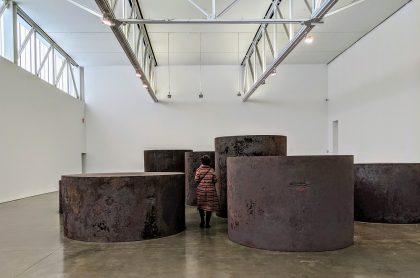
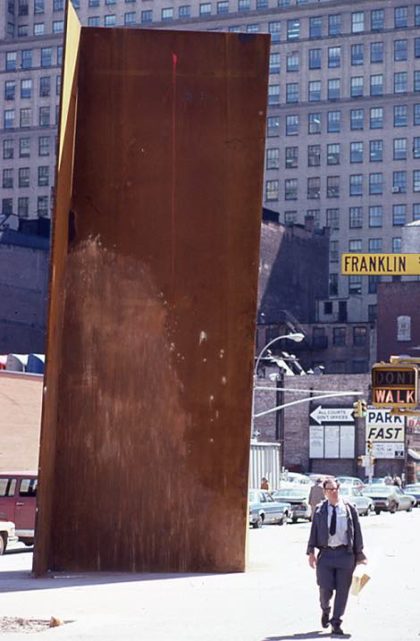
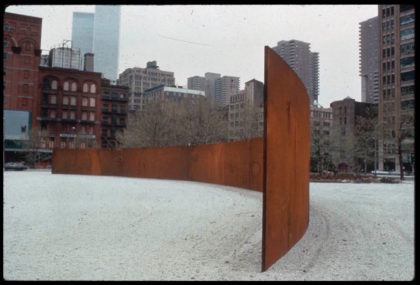
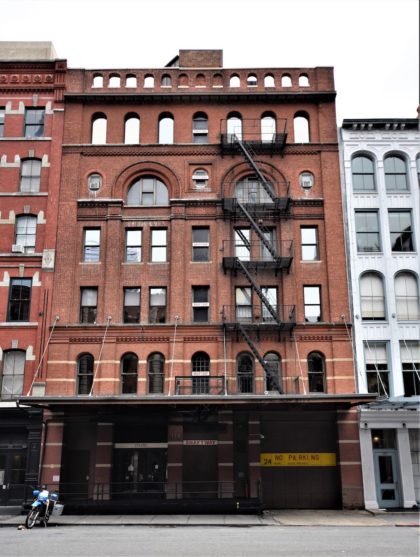
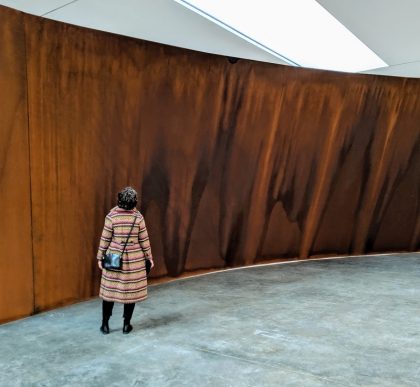






Madeline, thanks for sharing your stories.
Roberta Smith’s obit was amazing in the times.. Thanks Madeline for your clarity. The article mentions that Richard and Clara occupied the whole building on Duane Street. I dont think that was true. There was another tenant who i believe lived on the third floor between the Serras. To protect her privacy i will not mention the name. Dan Alterman Reade Street